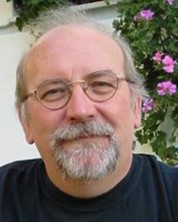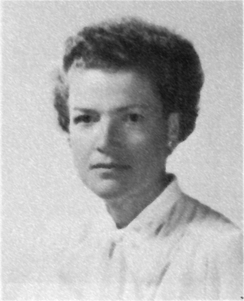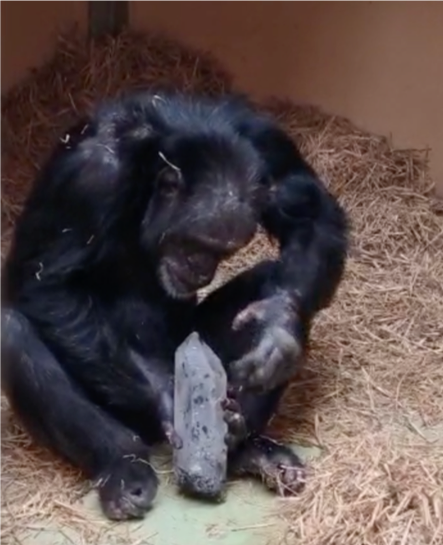Elizabeth A. Wood Science Writing Award: Prof. Juan Manuel García Ruiz
 The Elizabeth A. Wood Science Writing Award was created to highlight the written work of scientists, and non-scientists, in books or articles that bring science to the attention of a wider audience. This year the ACA highlights the incredible work of Professor Juan Manuel Garcia Ruiz. The Elizabeth A. Wood Science Writing Award was created to highlight the written work of scientists, and non-scientists, in books or articles that bring science to the attention of a wider audience. This year the ACA highlights the incredible work of Professor Juan Manuel Garcia Ruiz.
Professor Ruiz has collaborated with many Latin American crystallographers to share and disseminate the fundamentals of crystallography and structural science in Latin America. Having visited many times, Professor Ruiz has given a number of remarkable lectures and shared valuable materials, such as the documentary ‘The Mystery of The Giant Crystals’ and kits for crystal growing, with supporting materials and didactic guides. He also helped us in the organization of national crystal growing competitions, activity that resulted very successful in Argentina starting from Prof. García Ruiz’s experience in Spain.
Some of the amazing accomplishments of Professor Ruiz:
- Spanish Crystallization Contest at Schools: Competition aimed at secondary school students to disseminate the importance of the world of crystals in modern society and encourage scientific vocations among students.
- ‘CRYSTALS: A World to Discover’ exhibition: An illustrated walk through the fascinating world of crystals and their many applications.
- Krystala website (https://krystala.fundaciondescubre.es/): A website that includes -among other resources- interviews, articles, videos, lectures, applications, educational games, the Spanish Crystallization Contest website and the exhibition on Crystallography "Crystals: A World to Discover".
- 'The Mystery of The Giant Crystals’ documentary: A wonderful scientific documentary that discovers the wonderful world of crystals, their science and beauty and unveils the mystery of their formation, travelling from the Roman mines of Segobriga described by Pliny the Elder to the largest geode in Europe in Almeria (Spain), from the volcanic depths of the Andean mountain range, to the great Cave of the Crystals of Naica, a real crystal palace hidden under the Mexican desert of Chihuahua.
- Crystallization kits: Design of a didactic crystallization kits to grow giant crystals with a simple method to be used under the supervision of a teacher or tutor. Produced and commercialized by Triana Science and Technology
- Dissemination/outreach books:
And more than 200 brilliant and inspiring dissemination/outreach lectures all over the world.
|
Professor Ruiz's Award Presentation Information
Baltimore Marriott Waterfront Hotel
Date: Monday, July 10, 2023
Start: 7:30 PM
End: 9:30 PM
Room: Essex A-C
|
 To read more about the incredible life and accomplishments of Elizabeth Wood visit the ACA History portal. To read more about the incredible life and accomplishments of Elizabeth Wood visit the ACA History portal. |
Exploring the Impact of Crystals on Mind and Art
Professor Juan M Garcia-Ruiz
Instituto Andaluz de Ciencias de la Tierra. CSIC-Universidad de Granada, Granada, Andalucía, Spain
 Along with the invaluable contribution of crystallography to the advancement of science and technology, the very idea of crystal has been highly influential in the world of art and mind. The oldest of these influences is rooted in the earliest stages of the evolution of our minds before what we call consciousness emerged. Nowadays, there is a shred of incontrovertible evidence that the first objects hominins collected without any utilitarian interest were crystals of quartz and calcite. They were no arms, no tools, no jewels, just they collected the crystals because they liked it. This practice started at least 780,000 years ago, and is considered the first evidence of symbolic thought of our species. Since then, until modern times, human fascination for crystals has been deeply rooted in our brains. In this lecture, I will present my investigations on the origin of that fascination and on the impact that it could have in the evolution of the mind and in the development of arts. In the second part of the talk, I will discuss the extraordinary effect that the discovery of the connection between the external harmony, redundantly beautiful symmetry of crystals, and their internal order, periodic and iterative, have on thinking and on arts, from literature to painting, architecture to dance, and plastic art to filmmaking. Along with the invaluable contribution of crystallography to the advancement of science and technology, the very idea of crystal has been highly influential in the world of art and mind. The oldest of these influences is rooted in the earliest stages of the evolution of our minds before what we call consciousness emerged. Nowadays, there is a shred of incontrovertible evidence that the first objects hominins collected without any utilitarian interest were crystals of quartz and calcite. They were no arms, no tools, no jewels, just they collected the crystals because they liked it. This practice started at least 780,000 years ago, and is considered the first evidence of symbolic thought of our species. Since then, until modern times, human fascination for crystals has been deeply rooted in our brains. In this lecture, I will present my investigations on the origin of that fascination and on the impact that it could have in the evolution of the mind and in the development of arts. In the second part of the talk, I will discuss the extraordinary effect that the discovery of the connection between the external harmony, redundantly beautiful symmetry of crystals, and their internal order, periodic and iterative, have on thinking and on arts, from literature to painting, architecture to dance, and plastic art to filmmaking.
|

 The Elizabeth A. Wood Science Writing Award was created to highlight the written work of scientists, and non-scientists, in books or articles that bring science to the attention of a wider audience. This year the ACA highlights the incredible work of Professor Juan Manuel Garcia Ruiz.
The Elizabeth A. Wood Science Writing Award was created to highlight the written work of scientists, and non-scientists, in books or articles that bring science to the attention of a wider audience. This year the ACA highlights the incredible work of Professor Juan Manuel Garcia Ruiz. To read more about the incredible life and accomplishments of
To read more about the incredible life and accomplishments of  Along with the invaluable contribution of crystallography to the advancement of science and technology, the very idea of crystal has been highly influential in the world of art and mind. The oldest of these influences is rooted in the earliest stages of the evolution of our minds before what we call consciousness emerged. Nowadays, there is a shred of incontrovertible evidence that the first objects hominins collected without any utilitarian interest were crystals of quartz and calcite. They were no arms, no tools, no jewels, just they collected the crystals because they liked it. This practice started at least 780,000 years ago, and is considered the first evidence of symbolic thought of our species. Since then, until modern times, human fascination for crystals has been deeply rooted in our brains. In this lecture, I will present my investigations on the origin of that fascination and on the impact that it could have in the evolution of the mind and in the development of arts. In the second part of the talk, I will discuss the extraordinary effect that the discovery of the connection between the external harmony, redundantly beautiful symmetry of crystals, and their internal order, periodic and iterative, have on thinking and on arts, from literature to painting, architecture to dance, and plastic art to filmmaking.
Along with the invaluable contribution of crystallography to the advancement of science and technology, the very idea of crystal has been highly influential in the world of art and mind. The oldest of these influences is rooted in the earliest stages of the evolution of our minds before what we call consciousness emerged. Nowadays, there is a shred of incontrovertible evidence that the first objects hominins collected without any utilitarian interest were crystals of quartz and calcite. They were no arms, no tools, no jewels, just they collected the crystals because they liked it. This practice started at least 780,000 years ago, and is considered the first evidence of symbolic thought of our species. Since then, until modern times, human fascination for crystals has been deeply rooted in our brains. In this lecture, I will present my investigations on the origin of that fascination and on the impact that it could have in the evolution of the mind and in the development of arts. In the second part of the talk, I will discuss the extraordinary effect that the discovery of the connection between the external harmony, redundantly beautiful symmetry of crystals, and their internal order, periodic and iterative, have on thinking and on arts, from literature to painting, architecture to dance, and plastic art to filmmaking.


















